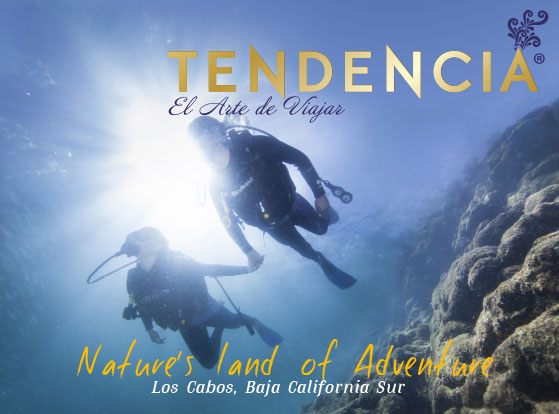Todo el
folclore es expresión de melancolía nutrida por la soledad del
desierto, la mansedumbre del mar de Cortés, la serranía agreste, el paisaje
primitivo y el alejamiento geográfico que debieron enfrentar los pobladores
peninsulares del resto de sus compatriotas.
All of the folklore of Baja California Sur is a single expression nurtured by the melancholy solitude of the desert, the mild manners of the Sea of Cortez, the wildness of the mountain ranges, the primitive landscapes and the geographical isolation residents have endured compared to their mainland compatriots. It is what the poet Raúl Antonio Cota calls "The aesthetics of the sea and desert."
All of the folklore of Baja California Sur is a single expression nurtured by the melancholy solitude of the desert, the mild manners of the Sea of Cortez, the wildness of the mountain ranges, the primitive landscapes and the geographical isolation residents have endured compared to their mainland compatriots. It is what the poet Raúl Antonio Cota calls "The aesthetics of the sea and desert."
He aquí algunas razones que ayudan a entender las manifestaciones folclóricas sudcalifornianas que derivan, desde el siglo XVIII, de la obra misional de los jesuitas que es, además de evangelizadora, fundamentalmente educadora.
The following information will help explain the folk expressions of the southern part of Baja California. Their origins are derived from Jesuit missionaries who were busy educating as well as evangelizing during the eighteenth century.
Es en los principios del siglo XX, a partir de la Revolución
Mexicana, cuando comienzan a tomar carácter definido nuestras manifestaciones
colectivas convertidas en danzas, cantos y algunas artesanías; participan en
éstas, de manera principal, el bejuco, el cuero curtido o vaqueta, el hierro,
el barro y la madera, en formas plásticas muy rudimentarias que persisten hasta
nuestros días; a ellos se han sumado materiales como el carey, la concha, el
cuerno de vacuno y el mimbre.
But let’s begin in the early twentieth century at the time of the Mexican Revolution. It is when our collective characteristics began taking shape and were manifested in the form of dance, song and some crafts. Various art forms appeared made of available materials, among them, rattan, leather, iron, clay and wood. Imitations made of plastic can be found today. Other materials such as tortoise shell, cow horn and wicker became popular over time.

Las danzas más representativas son La yuca, Las calabazas, La flor de pitahaya, La suegra, La cuera, El apasionado y El conejo. En el ingrediente musical de estas danzas tiene lugar sobresaliente el conjunto denominado La cochi, que toma su nombre del sonido peculiar del acordeón, del cual constituye parte esencial y al que el pueblo identifica con la onomatopeya del cerdo, especialmente en sus alaridos más dramáticos. “Cochi” es el apócope sudcaliforniano del cochino, como también conocen a ese mamífero los habitantes de otras regiones del país.
But let’s begin in the early twentieth century at the time of the Mexican Revolution. It is when our collective characteristics began taking shape and were manifested in the form of dance, song and some crafts. Various art forms appeared made of available materials, among them, rattan, leather, iron, clay and wood. Imitations made of plastic can be found today. Other materials such as tortoise shell, cow horn and wicker became popular over time.

Las danzas más representativas son La yuca, Las calabazas, La flor de pitahaya, La suegra, La cuera, El apasionado y El conejo. En el ingrediente musical de estas danzas tiene lugar sobresaliente el conjunto denominado La cochi, que toma su nombre del sonido peculiar del acordeón, del cual constituye parte esencial y al que el pueblo identifica con la onomatopeya del cerdo, especialmente en sus alaridos más dramáticos. “Cochi” es el apócope sudcaliforniano del cochino, como también conocen a ese mamífero los habitantes de otras regiones del país.
The most representative dances are: La Yuca, Las Calabazas, La Flor de Pitahaya, La Suegra, La Cuera, El Apasionado and El Conejo. A musical ingredient found in these dances is an unusual but distinctive ensemble called La Cochi. The peculiar sound is created by an essential part of the music, the accordion. Townsfolk said it replicates the dramatic howl of pigs. "Cochi" is the shortened form of pig in Baja California Sur. People of other regions also know the mammal by the same name.
Por su parte, el cancionero popular ha logrado asimismo ser en Sudcalifornia un factor pródigo para expresar hechos y sentimientos en la vida de la comunidad estatal. Diversas instituciones, organismos y agrupaciones de Baja California Sur promueven la producción folclórica con plena conciencia de que con ello se afirman nuestros valores y se confirma la identidad regional respecto a la nación de la que los habitantes de Sudcalifornia siempre han decidido formar parte.
Popular songs that express feelings and emotions and describe community life have also been an essential element of the folklore of Baja California Sur. Diverse institutions, organizations and groups promote the folklore of Baja California Sur with full knowledge that it affirms our values and confirms our regional identity with respect to the nation of which our people have always been willing inhabitants.
Para conocer más sobre la historia de Baja California Sur visita nuestro sitio web y edición digital vol.7
To know more about Baja California Sur History visit our website and digital edition vol.7










0 comentarios:
Publicar un comentario